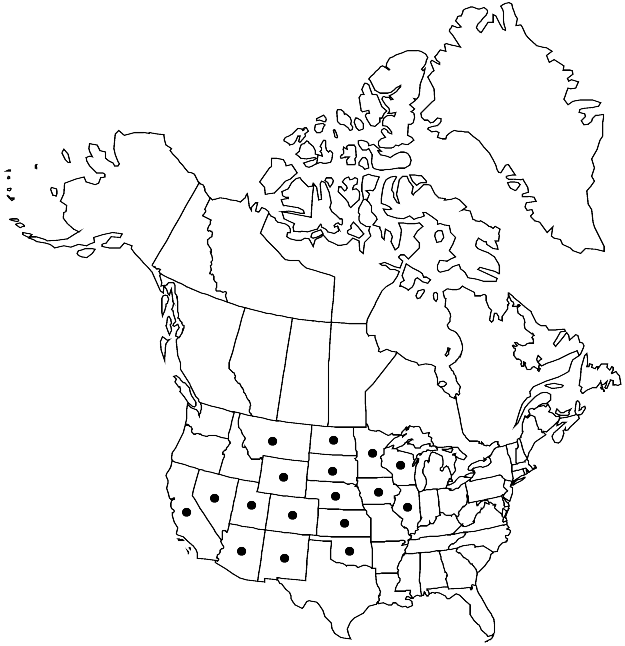Physaria ludoviciana
Novon 12: 325. 2002.
Perennials; caudex simple or branched; densely pubescent, trichomes (sessile or short-stalked), 4–7-rayed, rays usually furcate, sometimes bifurcate, (rough-tuberculate throughout). Stems few from base, erect with outer usually decumbent, 1–3.5(–5) dm. Basal leaves (erect); blade narrowly lanceolate to linear or (outer) oblanceolate, (1–)2–6(–9) cm, margins usually entire, rarely shallowly dentate, (inner involute, outer usually flat, base usually with some simple trichomes). Cauline leaves: blade narrowly oblanceolate to linear, (1–)2–4(–8) cm, margins flat or involute. Racemes compact, (elongated and loose in fruit, densely-flowered). Fruiting pedicels (usually recurved), (5–)10–20(–25) mm. Flowers: sepals oblong to broadly elliptic, 4–7(–8) mm, (lateral pair subsaccate, median pair cucullate); petals oblanceolate or obovate, (5–)6.5–9.5(–11) mm, (claw undifferentiated from blade, or blade gradually narrowed to claw). Fruits subglobose or obovoid, usually inflated, sometimes slightly compressed, (3–)4–6 mm; valves densely pubescent, trichomes spreading, usually pubescent inside, trichomes appressed, sessile; ovules (4–)8–12(–16) per ovary; style 3–4.5(–6.5) mm. Seeds slightly flattened. 2n = 10, 20, 30.
Phenology: Flowering Apr–Jul(-Aug).
Habitat: Sandy or gravelly soils, steep hillsides, prairie pastures, clay slopes, limestone outcrops, sand dunes, open plains, sandy bluffs, rocky flats, white tuff sands
Elevation: 0-1900 m
Distribution

Ariz., Calif., Colo., Ill., Iowa, Kans., Minn., Mont., Nebr., Nev., N.Mex., N.Dak., Okla., S.Dak., Utah, Wis., Wyo.
Discussion
Material previously reported as Physaria ludoviciana from Canada (Alberta, Manitoba, Saskatchewan) is here included in 6a. P. arenosa subsp. arenosa. Lesquerella argentea (Pursh) MacMillan is a later homonym that has been used for P. ludoviciana.
Selected References
None.